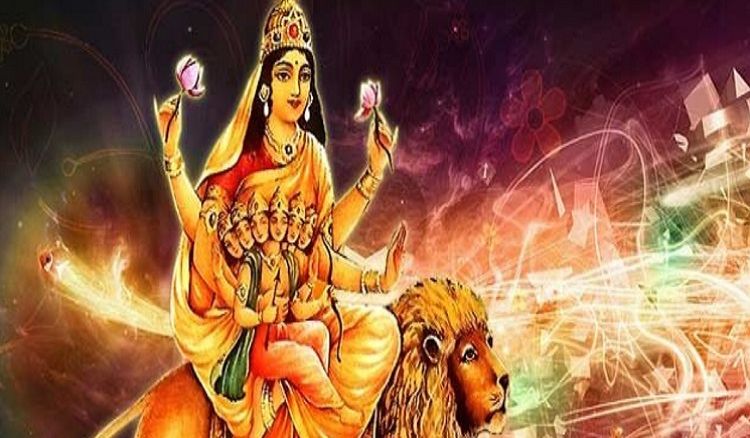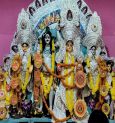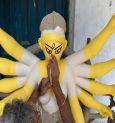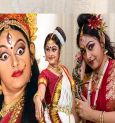Goddess Durga has descended into the mortal realm and the festival of Navratri is in full swing. On the fifth day of Navratri, the nine forms of Goddess Durga take centre stage, with each form representing a unique aspect of her divine nature. Skandamata is one such form, and her worship holds special significance on this day.
Skandamata is the mother of Lord Kartikeya, also known as Skanda, hence the name. She is often referred to as "Devi Skandamata." This form of the goddess is portrayed as a benevolent and nurturing figure, and her worship carries a profound message of purity, peace, and meditation.
Devotees on this day traditionally wear white attire as a symbol of purity. The choice of white colour for clothing is a reflection of the values of purity, tranquilly, and focus, making it a fitting tribute to the goddess.
In Bengal, as in many other regions of India, Durga Puja is celebrated with fervour and devotion. While in some parts, Durga is revered as the mother of Ganesha, in Western India, the tradition of worshipping Durga as Skandamata is prominent.
Skandamata is often depicted with four hands, holding her son Kartikeya in one hand, a lotus in another, and extending blessings with the remaining two hands. She is seated on a lion, and a lotus flower is often found blooming on her palm.
Skandamata's presence is believed to bring peace and harmony to her devotees' lives. She is said to dispel any unrest or negativity within the household.
According to Hindu mythology, the demon Tarakasura received a boon from Lord Brahma, making him nearly invulnerable. Tarakasura's power grew to such an extent that he became a menace to the gods and humans. Despite his immense devotion and penance, Lord Brahma was unable to prevent the demon's rampage.
Tarakasura's boon had the condition that only a son born to Lord Shiva and Goddess Parvati could defeat him. Lord Shiva, however, was reluctant to marry, and Tarakasura used this to his advantage. He subjected humans to severe atrocities due to his newfound invincibility.
To save the world from Tarakasura's tyranny, the gods pleaded with Lord Shiva to wed Parvati. After the union of Shiva and Parvati, their son Kartikeya, also known as Skanda, was born. Kartikeya ultimately defeated Tarakasura and brought an end to his reign of terror.
The story of Devi Skandamata represents the profound connection between a mother and her child. It serves as a reminder of the protective and nurturing qualities that mothers possess, highlighting the sanctity of the mother-child relationship.
To begin the worship of Skandamata on the fifth day of Navratri, devotees should wake up early, take a purifying bath, and don clean, white attire. The idol or image of Skandamata should be placed in the designated puja area and purified with holy water, usually from the Ganges. Then, a kalash (a ceremonial pot) filled with water and some coins should be prepared.
Devotees can offer their prayers and perform aarti to Skandamata, seeking her blessings and guidance. As a token of devotion, it is customary to offer six cloves along with other customary offerings.
In conclusion, the worship of Goddess Durga in the form of Skandamata on the fifth day of Navratri is a celebration of purity, tranquilly, and the sacred mother-child bond. It is a reminder of the protective and nurturing qualities embodied by mothers, a concept cherished in Hindu culture.
 বাংলায় পড়ুন
বাংলায় পড়ুন














